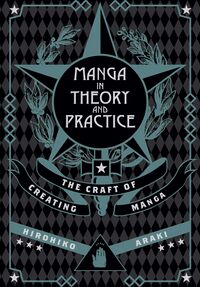Anime News Network (June 2017)
TSKR OVA Interviews (June 2017)
Interview Archive

An English interview with Hirohiko Araki by Anime News Network released on June 29, 2017 to coincide with the recent English release of Hirohiko Araki's Manga Techniques.[1]
Interview
HIROHIKO ARAKI: When I create characters’ outfits, I am conscious of two elements: ‘daily life’ and ‘fantasy’. I envision everyday fashion alongside strange, cartoonish, bizarre clothing that would be impractical in real life.
You don't seem to stick to a specific color scheme for your characters when doing cover illustrations or color pages. Why is that?
I put more emphasis on giving readers different feelings and impressions through different color combinations.
Which Stand powers were the most fun for you to draw? Are there any Stand powers which you had an especially difficult time depicting?
One of my favorites stands is Shigechi's (Shigekiyo Yangu's) ‘Harvest.’
One that I had a difficult time with (not artistically, but rather in terms of plot and story development) is ‘Killer Queen’ in Part 4. I felt that I may have made it too strong. It wouldn't have been a surprise if Josuke was not able to defeat it.
Steel Ball Run took an interesting approach to battle manga by focusing on a positive portrayal of a hero with a disability. What inspired you to create Johnny Joestar?
My work centers around protagonists who grow as they overcome hardship. In creating Johnny, I didn't necessarily set out to depict a hero with a disability. He was the end result of my pursuit to create a character who could grow, both physically and mentally, during a race where he would be forced not only to rely on other people, but horses as well.
You've spoken in other interviews about how you drew muscular body types in Phantom Blood and Battle Tendency because Stallone and Schwarzenegger were popular at the time. You've also said that you moved to thinner body types for Diamond is Unbreakable and Vento Aureo because readers were losing interest in muscle men and you wanted to do more with your interest in fashion. Steel Ball Run and JoJolion seem to represent another big shift in the evolution of your art style. What inspired the looks of Steel Ball Run and JoJolion?
In Parts 1 through 8, I put a conscious effort into creating distinguishable protagonists who don't have similar silhouettes and appearances, including their outfit designs. I also have the protagonists function to symbolize the “world” that each part takes place in, so the story influences them as well. Of course, I also don't want to hinder the evolution of the art itself. I'm always exploring art styles.
You worked for several years with a weekly deadline as part of Shonen Jump, until transitioning to a monthly deadline when JoJo's Bizarre Adventure moved to Ultra Jump in 2004. What are your feelings on the weekly vs. monthly model of creating manga?
Having a deadline every week, along with shorter chapters, restricts what can be drawn, and also requires momentum to build up excitement for the following week. With monthlies, there's more pages and flexibility for me to draw at my own pace, which suits me at this time.
It's become a running joke among your fans and colleagues that you're an immortal who doesn't age. Do you have any beauty tips you'd like to share with our readers?
Living an orderly lifestyle and face washing with Tokyo tap water.
In Manga in Theory and Practice, you say that the theme of all 8 parts of JoJo is "an affirmation that humanity is wonderful". Could you elaborate on that?
I believe that people are able to grow by overcoming obstacles through the power of the human spirit and strength, and that, I believe is “an affirmation that humanity is wonderful”. Within ‘JoJo's Bizarre Adventure’, there are fights and stories that involve various elements. However, in the end, people pull through without relying on machines and divine beings to determine fate themselves. Drawing people like that is my ‘affirmation that humanity is wonderful’.
